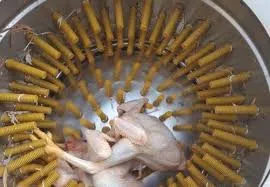farrowing pens
Oct . 06, 2024 10:00 Back to list
farrowing pens
The Importance of Farrowing Pens in Modern Pig Production
Farrowing pens are crucial facilities in modern pig production, specifically designed to provide a safe and comfortable environment for sows and their piglets during the farrowing process. The farrowing stage is a critical period in swine production, as it is not only when piglets are born but also when their early development begins. The design and management of farrowing pens can significantly influence the health and welfare of both sows and piglets, ultimately impacting the productivity of the entire herd.
One of the primary functions of a farrowing pen is to ensure the safety of piglets. Newborn piglets are vulnerable to various risks, including crushing by the sow. Farrowing pens typically feature barriers that prevent the sow from lying too close to her piglets, helping to reduce the incidence of crushing. These pens are usually equipped with a creep area, a separate space where piglets can escape and seek warmth from heat sources while remaining safely away from the sow, thus reducing the risk of injury.
Moreover, the design of farrowing pens can significantly impact the well-being of the sow. Sows require adequate space to move comfortably and exhibit natural behaviors during farrowing. Modern farrowing pens often include features that allow for a degree of freedom of movement, such as adjustable sides or elastic barriers that can accommodate the sow's posture during labor. Additionally, proper ventilation and bedding materials in the pens contribute to the overall comfort of the sow, reducing stress levels and promoting successful farrowing.
farrowing pens

Another important aspect of farrowing pens is their role in hygiene and disease prevention. Adequate sanitation is essential in pig production to prevent the spread of pathogens that can affect both sows and their offspring. Farrowing pens are often designed with materials that are easy to clean and disinfect, helping maintain a healthy environment for the animals. Regular cleaning protocols and the use of appropriate bedding materials also reduce the risk of infections, contributing to the overall health of the piglets and their mother.
Furthermore, the management of farrowing pens extends beyond physical design. Effective monitoring of sows during farrowing is essential to ensure timely interventions if complications arise. Utilizing technology, such as cameras or sensors, can assist farmers in closely observing sows and responding quickly to any signs of distress or abnormality during the farrowing process.
In conclusion, farrowing pens are indispensable in modern pig production, serving multiple purposes that enhance the welfare and productivity of sows and piglets. By fostering a safe and comfortable environment, maintaining high hygiene standards, and enabling effective management practices, farrowing pens contribute significantly to the success of pig farming operations. Investing in well-designed farrowing pens not only supports the health of the animals but also ensures economic viability for producers, highlighting their critical role in the sustainability of the swine industry. As the industry continues to evolve, ongoing research and development in farrowing pen design and management strategies will be vital to meet the challenges of modern agriculture and animal welfare standards.
-
Hot Sale 24 & 18 Door Rabbit Cages - Premium Breeding Solutions
NewsJul.25,2025
-
Automatic Feeding Line System Pan Feeder Nipple Drinker - Anping County Yize Metal Products Co., Ltd.
NewsJul.21,2025
-
Automatic Feeding Line System Pan Feeder Nipple Drinker - Anping County Yize Metal Products Co., Ltd.
NewsJul.21,2025
-
Automatic Feeding Line System - Anping Yize | Precision & Nipple
NewsJul.21,2025
-
Automatic Feeding Line System - Anping Yize | Precision & Nipple
NewsJul.21,2025
-
Automatic Feeding Line System-Anping County Yize Metal Products Co., Ltd.|Efficient Feed Distribution&Customized Animal Farming Solutions
NewsJul.21,2025






